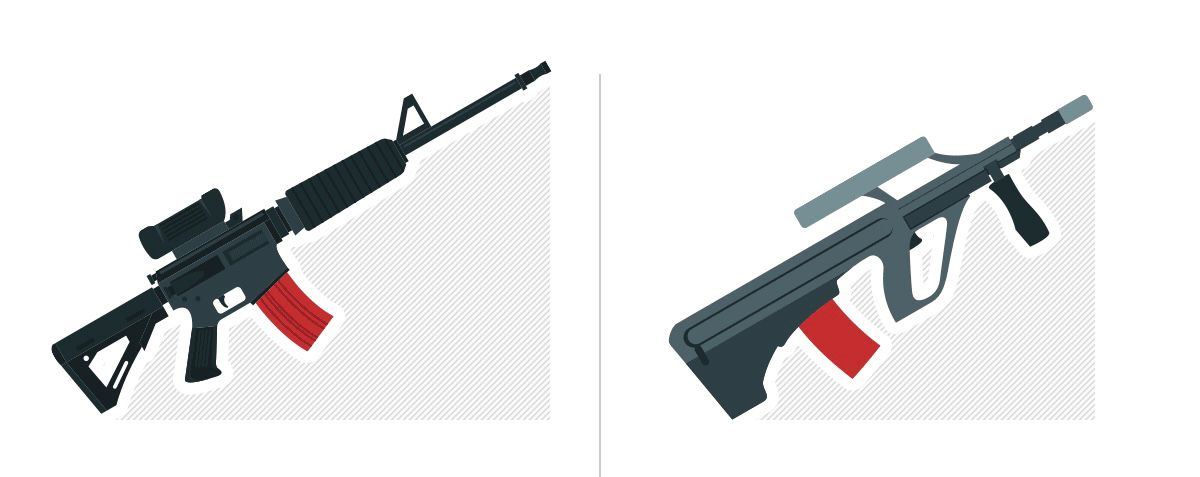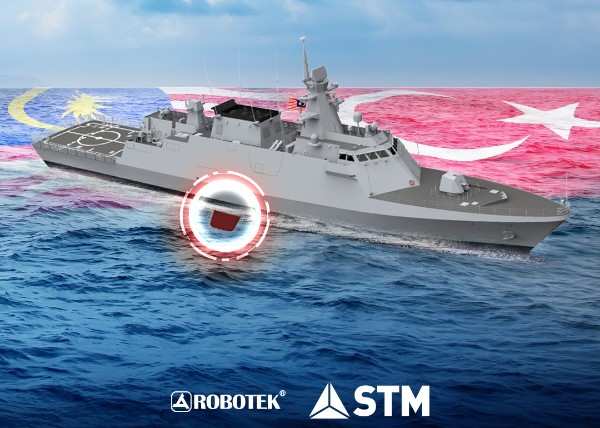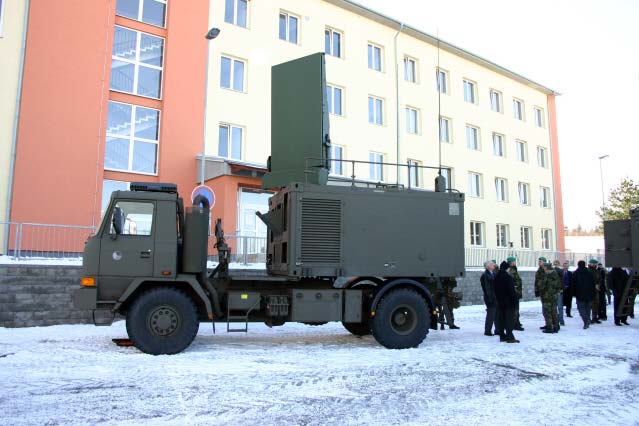Small arms design choices have always balanced ergonomics, firepower, compactness, and ease of use. Among the most debated is the bullpup layout, where the magazine and action are located behind the trigger, versus the conventional (standard‑layout) rifle with the action and magazine forward of the trigger. This debate shapes infantry effectiveness in urban warfare, mechanized transport, special operations, and general field deployment. Over the past half‑century, many countries have adopted bullpups to gain compact utility without compromising barrel length, while others have stuck with or returned to conventional rifles for their familiarity and modularity. Below is an in‑depth comparison of both designs, including notable weapons and national use cases.
Table of Contents
ToggleWhat Defines Each Layout
-
Bullpup Rifles
A bullpup rifle positions the action and magazine behind the trigger group—often close to the shooter’s shoulder—allowing full‑length barrels in shorter overall weapon lengths. Examples include the Steyr AUG (Austria), FAMAS F1/G2 (France), SA80/L85 (UK), IWI Tavor TAR‑21 / X95 (Israel), QBZ‑95 / Type 95 (China), and others.
-
Conventional Rifles
Standard layout rifles (e.g. M16/M4, AR‑15 variants, AK‑47/74, HK416) place the action and magazine ahead of the trigger. This design has dominated global infantry armories due to decades of proven effectiveness, ease of manual of arms training, and accessory modularity.
Advantages & Disadvantages
Bullpup Advantages
- Compactness: A bullpup can maintain a full-length barrel (e.g. 16 in or longer) while drastically reducing overall length. Tavor 7, for instance, has a 16.5″ barrel within a ~26.8″ OAL—shorter than many 16″‑barreled AR‑15s
- Maneuverability: Especially effective in CQB, vehicle operations, or tight urban spaces—allowing cover usage and cornering while retaining barrel length for ballistic performance
- Balance: Weight is seated close to the shoulder, making it easier to maintain aim and adding accessories without upsetting handling
- Forward ejection (some models): Rifles like the FN F2000 and Russian ADS eject spent brass forward, improving ambidextrous usability and left‑shoulder firing
Bullpup Disadvantages
- Trigger feel: Linked-length trigger mechanisms often produce heavier pull, longer travel, and less precision. Some rifles overcome this better than others, but it’s still generally inferior to conventional triggers
- Reload ergonomics: Magazines located behind the hand increase reload times unless the operator trains thoroughly
- Accessory space: Limited rail real estate and constrained ergonomics make mounting grips, lasers, optic gear more difficult
- Maintenance and ambidexterity: Many designs were initially not easily configured for left-handed shooters and have more complex internals
Conventional Advantages
- Ergonomics and training familiarity: Standard controls (mag release, bolt catch, safety) align with decades of training. Muscle memory is intuitive.
- Modularity: Rails, quick-change barrels, stock options and accessories are more robustly supported.
- Trigger quality: Shorter, direct triggers offer crisp, reliable pull often preferred by marksmen.
- Prone and long‑range use: Conventional rifles often perform better prone given their lower profile, easier upward adjustment, and more consistent barrel harmonics.
Conventional Disadvantages
- Length: With full-length barrels, conventional rifles are longer—less ideal for vehicle entry or tight quarters unless SBRs (short-barreled rifles) are used.
- Balance: Front-heavy when outfitted with optics or suppressors, potentially causing fatigue or affecting handling.
- Barrel vs compactness trade‑off: Shortening the rifle for maneuverability often sacrifices ballistics and effective range.
Country Examples & Field Use
Austria & Australia – Steyr AUG / EF88 Austeyr
- Steyr AUG adopted by Austria in 1977 (StG 77) and later by Australia, Ireland, and Malaysia. Known for modular barrels, polymer body, integrated optic and long-lived global service.
France – FAMAS F1 / G2
- FAMAS entered French service in 1978, around 400,000 F1 units produced. Phased out beginning 2017 in favor of HK416F; expected in limited use through 2028
United Kingdom – SA80 / L85 Series
- Introduced in mid‑1980s, L85 became standard since 1987. Early reliability issues led to H&K upgrades (A2, A3 variants). As of 2025, L85A3 remains in front-line service
China – QBZ‑95 Family (Type 95)
- Standard issue rifle of the People’s Liberation Army since ~1997. It uses China’s 5.8×42 mm cartridge. Exports include Type 97 variants chambered in 5.56 NATO
Singapore – SAR‑21
- The Singapore Armed Forces adopted SAR‑21 as standard. Emphasizes reliability, maintenance ease, and ambidextrous controls
Israel – Tavor TAR‑21 and X95; Tavor 7
- Israel designed the TAR‑21, X95 and later Tavor 7 (7.62 NATO bullpup battle rifle) for harsh desert and urban combats. Used by IDF infantry and many special operations units. X95 has gained widespread international adoption
Russia – A‑91, OTs‑14 Groza, ShAK‑12
- Russia’s A‑91 bullpup (with integrated grenade launcher) sees limited special forces use. OTs‑14 Groza and near‑amphibious ADS also represent niche bullpup development
- ShAK‑12 is a heavy‑caliber bullpup for CQB used by FSB units, firing 12.7×55mm rounds
Real‑World Trends & Modern Commentary
- While bullpups like the Tavor and AUG have enjoyed long service lives, several countries now transitioning back to conventional rifles, especially AR‑15 family platforms. For instance, the UK has adopted L403A1 (AR derivative) for UK Special Forces and Royal Marines; France replaced FAMAS with HK416F; Luxembourg also moved from AUG to HK416.
- Israel, despite designing the Tavor, reportedly evaluates AR variants for future standard issue, especially for special forces units Reddit.
- New Zealand replaced Steyr AUG with AR‑15‑style LMT MARS platform in 2017
- Many special forces units worldwide still retain bullpup rifles for specific missions, while front-line infantry gravitate toward conventional designs for interoperability and familiarity.
Comparison Summary Table
| Feature / Use Case | Bullpup Rifles | Conventional Rifles |
| Overall Length | Short for barrel length → better CQB utility | Longer unless SBR; more unwieldy in tight spaces |
| Barrel Length vs Ballistics | Full-length barrels preserved | Barrel vs OAL trade‑off; SBR sacrifices velocity |
| Reload Speed / Ergonomics | Slower reloads; challenging to train | Intuitive mag changes, bolt catch, familiarity |
| Trigger Quality | Linkage causes heavy, spongy pull | Crisp, direct triggers standard |
| Accessory Customization | Limited real estate; cramped mounting | Wide rails, flexible setups |
| Ambidextrous & Maintenance | Mixed—some designs forward eject; many not ambi | Naturally ambidextrous or easily converted |
| Learning Curve / Training | Requires retraining, muscle‑memory change | Globally standardized training |
| Balance & Weight Distribution | Rear‑centered, easy to shoulder | Front accessories shift center-of-gravity |
Case Studies
Urban / Mechanized Warfare
Bullpups excel in confined environments. Israeli urban operations and special forces value the Tavor’s maneuverability, shorter length when entering armored vehicles, and retained barrel velocity.
British tank and APC crews historically benefited from SA80 compactness, though the early models had reliability issues later resolved in A2/A3 upgrades.
Affiliation & Training Continuity
US‑trained forces and NATO have heavily standardized on AR‑variant platforms. For quick interoperability and common weapon drills, conventional rifles give clear advantages. Ukraine’s shift from AK‑family to US‑supplied M4 carbines during the Russia‑Ukraine war underscored training continuity, logistical simplicity, and ammo alignment
Special Forces Use
Special forces often choose based on mission rather than doctrinal rifle choice. While IDF or Singaporean SF may use Tavors, many Western SF retain AR or AK variants for optics compatibility, suppressor use, and modular mission-specific gear.
Which Is “Superior”?
No design is universally superior: both have trade-offs.
- Bullpup rifles offer unmatched compactness with full barrel performance—making them ideal for urban and mechanized warfare—but require user adaptation to reload, trigger feel, and ergonomics.
- Conventional rifles give more versatility, better handling for long‑range and prone shooting, simpler training paths, and robust modularity supported by a global industry.
In many modern armies, initial adoption of bullpups has matured into mixed arsenals: general infantry may move to familiar AR‑style weapons, while specialized units retain bullpup rifles for specific use cases.
Conclusion
The bullpup layout delivers exceptional compactness with ballistic integrity—valuable in urban, vehicular, and close‑quarters contexts. Iconic models like the Austrian Steyr AUG, French FAMAS, British SA80, Israeli Tavor series, Chinese QBZ‑95, and others showcase its global impact over the past several decades. Yet, ergonomic downsides, reload speed challenges, and trigger compromises have pushed many nations back toward conventional rifles, especially AR platform families, for interoperability, training efficiency, and modular accessory support.
Ultimately, whether a bullpup or conventional rifle is “superior” depends on operational context, training doctrine, and end-user priorities. A balanced arsenal—using conventional weapons for general infantry and bullpups for designated roles—often provides the best of both worlds.

Muhammad Ismail Mir
The author is a UK-based small arms expert and geopolitical analyst.
- Muhammad Ismail Mir
- Muhammad Ismail Mir
- Muhammad Ismail Mir















